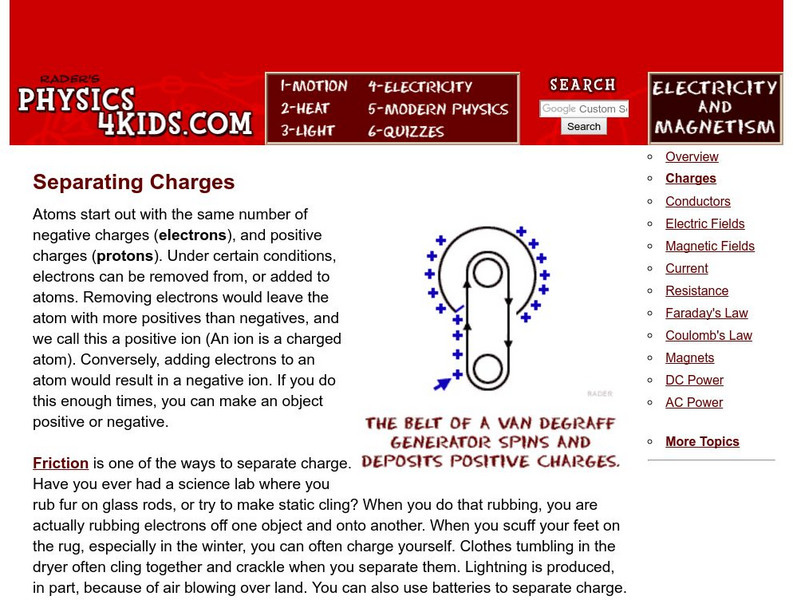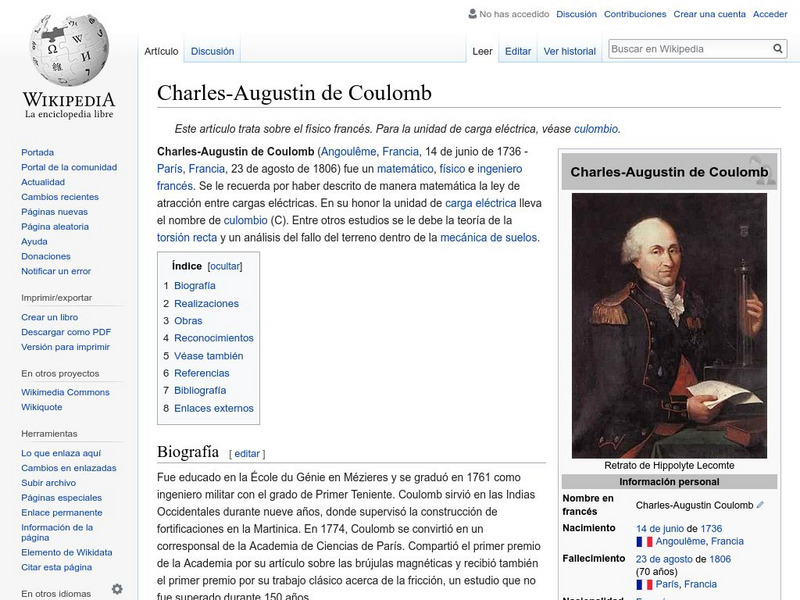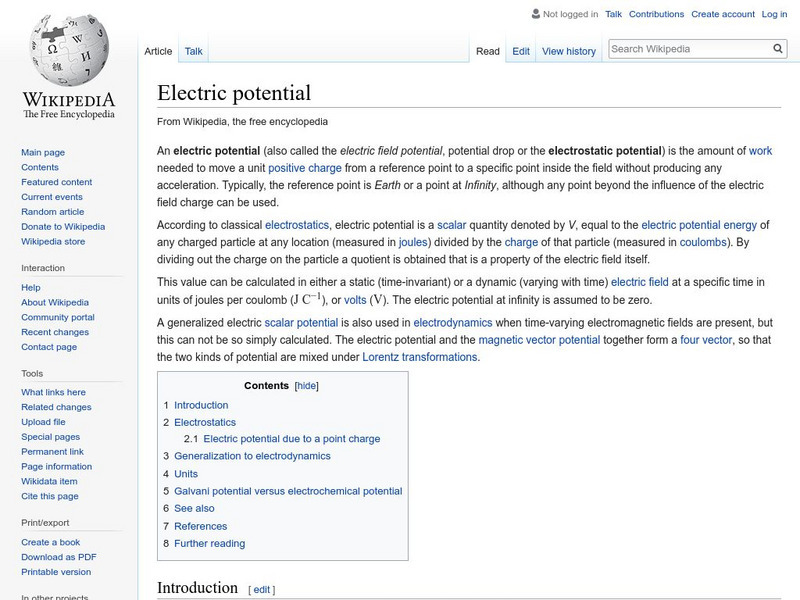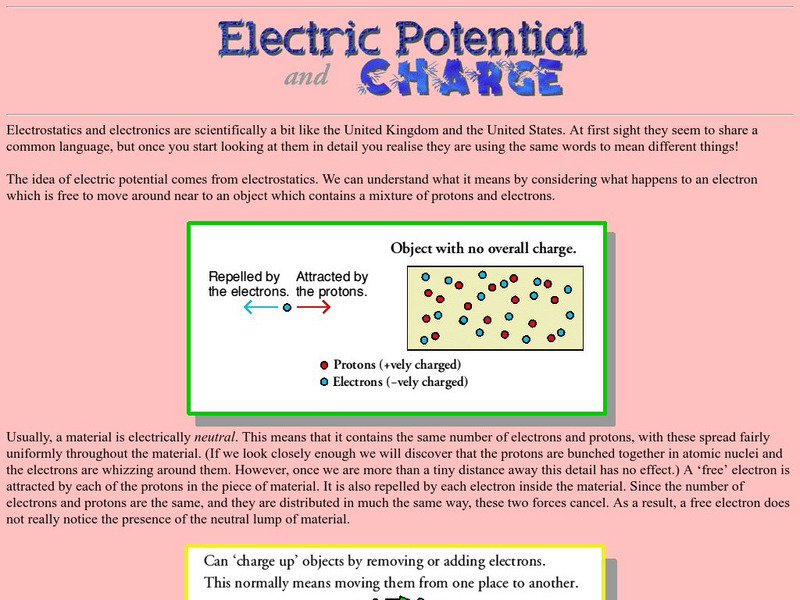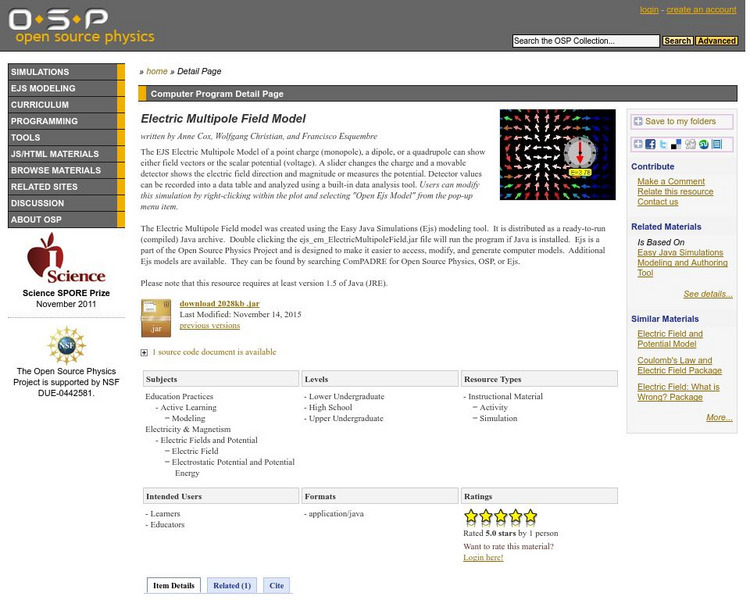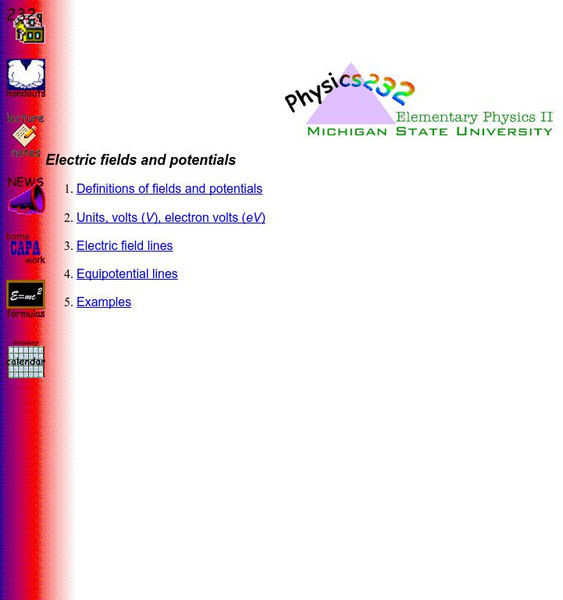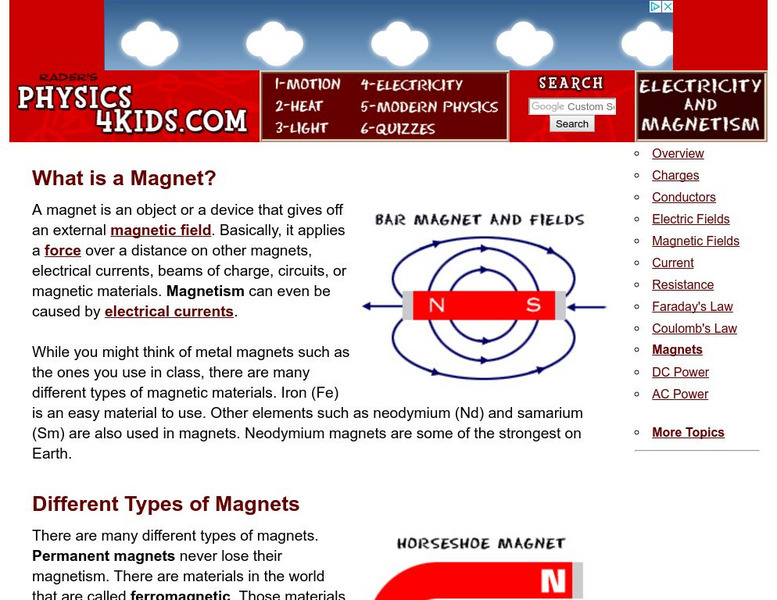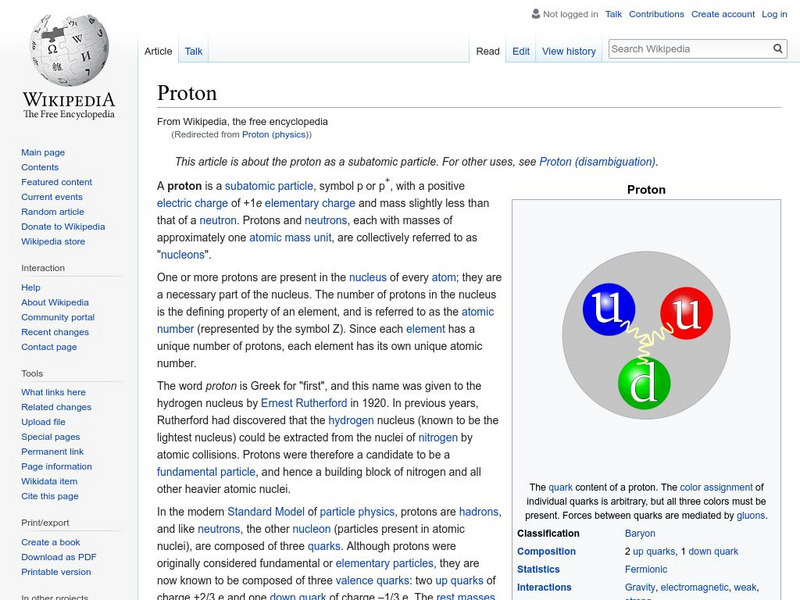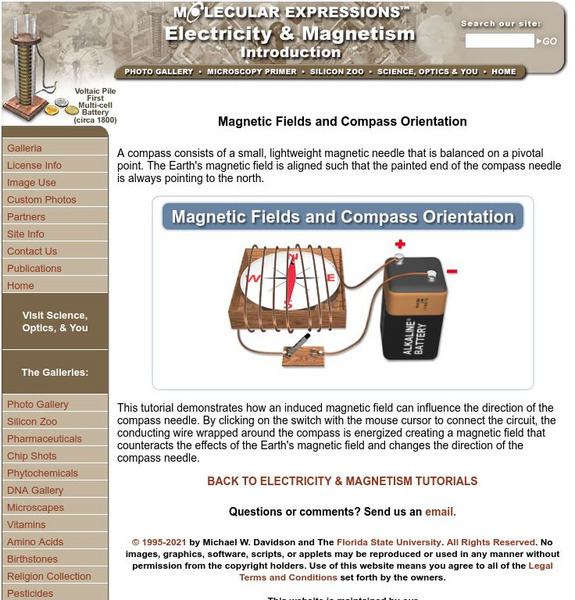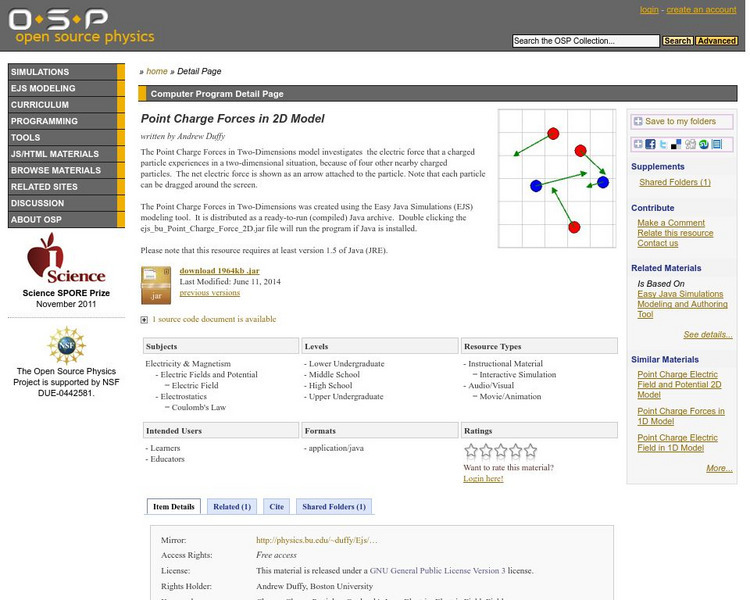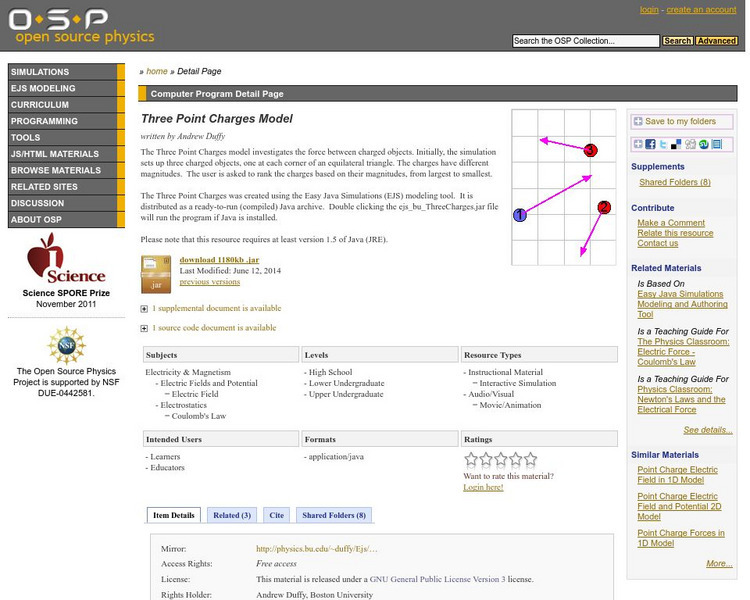Chymist
Batteries
Young scientists study the construction of a battery through experimentation. They engage in five experiments which combine to create a thorough study of the history of batteries beginning with a model of the first battery.
National Institute of Open Schooling
Radioactive Pollution
Radioactive pollutants can enter the body through ingestion, inhalation, absorption, or injection. The last lesson in a series of 36 introduces pupils to radioactive pollution. They study its sources, both natural and man-made, its...
Massachusetts Institute of Technology
Nuclear Synthesis
Start this lesson with a bang! The eighth in a 13-part series of lessons explains the origin of elements beginning with the Big Bang Theory. The reading describes the formation of elements hydrogen through uranium.
Physics4kids
Physics4 kids.com: Charge It Up
Discover the science behind electrical charges. This brief overview describes changes in atoms that lead to the formation of electricity. Explanations are also provided for the topics of electrostatics and electric forces. The whole...
Orpheus Books
Q Files: Electricity and Magnetism: Electric Charge
Learn how electric charges work and about Coulomb's Law, which is used to calculate the strength of an electric force.
Wikimedia
Wikipedia: Charles Augustin De Coulomb
Spanish-language site lets students discover the life and work of this physicist and engineer, who is known for his studies of electric charges.
American Association of Physics Teachers
Com Padre Digital Library: Open Source Physics: Point Charge Electric Field
Investigate with the electric field around one or two charged particles at different points along a line in this physics simulation.
Energy for Sustainable Development
Esd Bulgaria: Kids & Energy: Electricity
Electricity is the flow of electrical power or charge. It is a secondary energy source which means that we get it from the conversion of other sources of energy, like coal, natural gas, oil, nuclear power and other natural sources, which...
Wikimedia
Wikipedia: Electrical Potential
Wikipedia provides detailed information on electrical potential, including a definition, introduction, and mathematical formulas.
American Association of Physics Teachers
Com Padre Digital Library: Open Source Physics: Charge Trajectories
Investigate a the forces exerted on a charged particle by electric and magnetic fields. Initially, find out how the charge behaves in an electric field. Then, see how the charge behaves in a magnetic field. Finally, initiate both fields...
University of St. Andrews (UK)
University of St. Andrews: Physics and Astronomy: Electric Potential and Charge
From The Scots Guide to Electronics web site. The meaning of electric potential is described. A combination of diagrams and words are used to explain this difficult concept without the use of mathematics. Very well done!
American Association of Physics Teachers
Com Padre Digital Library: Open Source Physics: Electric Multipole Field Model
Simulation demonstrating how a point charge, a dipole, or a quadrupole shows field vectors or voltage. Change the charge and see the electric field direction and magnitude, and then record the detector values using a built-in data...
Oswego City School District
Regents Exam Prep Center: Electricity: The Mouse Cheese Analogy
This page uses a mouse and cheese analogy to show the relationships involved in electricity through currents and charges. Among the topics covered by the analogy are voltage, resistance and electromagnetism.
Michigan State University
Michigan State University: Physics: Electric Fields and Potentials
Defines electric potential, field lines, and equipotential lines. Contains example problems and formulas for solving.
American Association of Physics Teachers
Com Padre Digital Library: Open Source Physics: Electric Field: What Is Wrong?
What's wrong with this model? Students expect simulations to show factual science concepts, but these particular simulations are intentionally built incorrectly. The objective is to find where the physics concerning electric fields is...
Physics4kids
Physics4kids: Electricity and Magnetism: Magnets
Here is the site to help you learn all about magnetism and magnets! Find out what a magnet is and how it works. Click for additional details on charges, conductors, magnetic fields, currents, resistance as well as the Laws of Faraday and...
Wikimedia
Wikipedia: Proton
Wikipedia offers information on the proton, a subatomic particle with a positive electric charge. Many hyperlinked terms.
Cornell University
Cornell University: Astronomy: Electromagnetism and Charge
This site from Cornell University provides a very short, very telling comparison of matter and charge. This is a good site to check out on the subject, with a chart diagram to help with further information.
Florida State University
Florida State University: Molecular Expressions: Magnetic Fields and Compass Orientation
Simulate the creation of an induced magnetic field through the use of a simple electric circuit. An interactive demonstration is included.
American Association of Physics Teachers
Com Padre Digital Library: Open Source Physics: Point Charge Forces in 2 D Model
In this simulation, examine the electric force that a charged particle gains from nearby charged particles in a two-dimensional state. See the net electric force shown as an arrow attached to the particle.
American Association of Physics Teachers
Com Padre Digital Library: Open Source Physics: Point Charge Forces in 1 D Model
Virtual simulation investigating the electric force that one charged particle exerts on another. Plot a graph of the electric force as a function of position.
American Association of Physics Teachers
Com Padre Digital Library: Open Source Physics: Three Point Charges Model
In this simulation, investigate the force between charged objects. Rank three charged objects of different magnitudes, then create a method to determine the ranking of the charge magnitudes. Finally, devise a new method of determining...
Physics4kids
Physics4 Kids: Electricity and Magnetism: Moving Electrons and Charges
Learn basic information about electricity on this page. Page explores the movement of charges with text and a video.
Other
Science Hobbyist: Capacitors Do Not Store Charge
A page which clarifies many static electricity misconceptions, including how a capacitor charges.
Other popular searches
- Electric Charge Behavior
- Electric Charge and Force
- Physics Electric Charges
- Electric Charges and Current
- Flow Electric Charges



